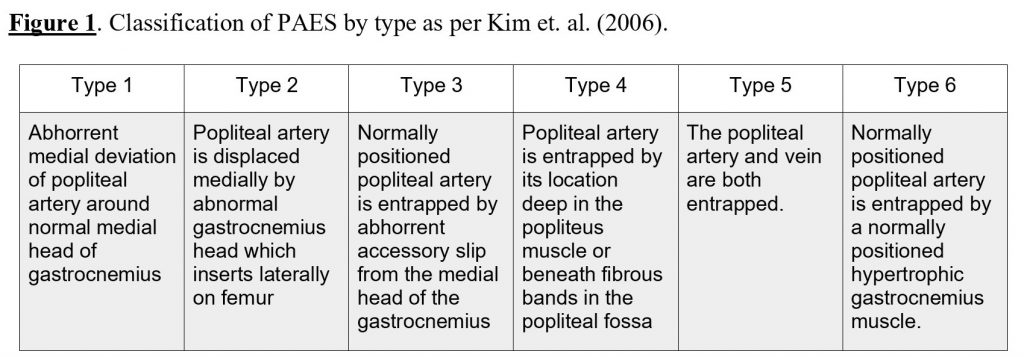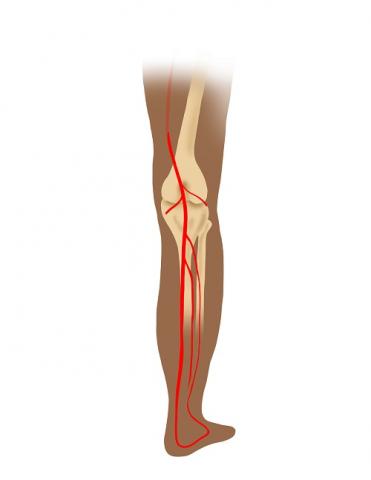Popliteal Entrapment Syndrome Treatment
Popliteal entrapment syndrome treatment. Endovascular Procedure-These are minimally invasive procedures non-surgical methods that are performed inside the blood vessels and are found to be very effective in the treatment of popliteal artery entrapment syndrome. Your UPMC vascular surgeon can treat PAES through open surgery to release the compression of the popliteal artery. Treatment The definitive treatment for popliteal artery entrapment syndrome is surgical intervention.
The patient was treated with myotomy of the medial head of the gastrocnemius muscle and concomitant endarterectomy of the popliteal artery. In these cases a bypass with either a vein or a synthetic graft is required to restore normal. Treatment In cases of anatomical PAES surgery is almost always the most effective treatment.
They later reported four more cases and claimed that the incidence of this pathology in patients younger than 30 years old with claudication was 40. Thrombolytic therapy can be used to treat acute and subacute occlusions of the popliteal artery due to underlying stenosis. Early diagnosis through a combined approach careful physical examination and history-taking duplex ultrasonography computerized tomography and angiography is necessary for exact diagnosis.
Thrombolytic therapy is most successful if initiated within 2 weeks after thrombosis 6. During this surgery an incision is made behind the knee to access the popliteal artery and the muscle tendon or band causing the compression is. Because the types of entrapment vary surgery can include fasciotomy removal of the offending bands of muscle muscle transfer fossa decompression or any combination of the above.
What is the surgical procedure for popliteal artery entrapment syndrome. The aneurysm causes chronic embolisation to d. Because of the progressive nature of this entity even asymptomatic limbs should have surgical correction to prevent irreversible change 8.
Early detection and treatment are associated with better long-term results 9. Additionally the management of uncomplicated PAES usually includes the surgical exploration with the addition of fasciotomy the myotomy or the release of the popliteal artery by sectioning the fibrous bands. Treatment If compression is detected and the popliteal artery remains healthy surgery most often results in restoring normal blood flow to the leg.
Therapy is initiated with a catheter with multiple side holes that is positioned across the occluded segment. The untreated condition causes ischemia of limb tissues with increased frequency of limb amputation.
What is the surgical procedure for popliteal artery entrapment syndrome.
Thrombolytic therapy is most successful if initiated within 2 weeks after thrombosis 6. Early detection and treatment are associated with better long-term results 9. They later reported four more cases and claimed that the incidence of this pathology in patients younger than 30 years old with claudication was 40. The patient was treated with myotomy of the medial head of the gastrocnemius muscle and concomitant endarterectomy of the popliteal artery. Treatment If compression is detected and the popliteal artery remains healthy surgery most often results in restoring normal blood flow to the leg. Surgery to relieve abnormal compression of the artery is performed in two approaches. During this surgery an incision is made behind the knee to access the popliteal artery and the muscle tendon or band causing the compression is. The untreated condition causes ischemia of limb tissues with increased frequency of limb amputation. Your UPMC vascular surgeon can treat PAES through open surgery to release the compression of the popliteal artery.
Early detection and treatment are associated with better long-term results 9. Thrombolytic therapy is most successful if initiated within 2 weeks after thrombosis 6. Early detection and treatment are associated with better long-term results 9. Because the types of entrapment vary surgery can include fasciotomy removal of the offending bands of muscle muscle transfer fossa decompression or any combination of the above. The untreated condition causes ischemia of limb tissues with increased frequency of limb amputation. Bare-metal drug-eluting biodegradable and covered stents stent-grafts are intended to provide enhanced treatment with a reduced risk of the perioperative complications associated with open. Because of the progressive nature of this entity even asymptomatic limbs should have surgical correction to prevent irreversible change 8.







































Post a Comment for "Popliteal Entrapment Syndrome Treatment"